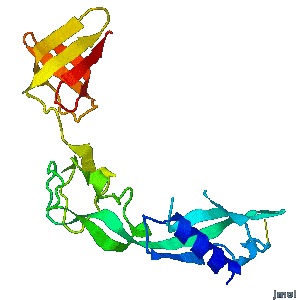Proteopedia:Featured JRN/1
From Proteopedia
(Difference between revisions)
| Line 5: | Line 5: | ||
A periplasmic flagellar chaperone protein, FlgA, is required for P-ring assembly in bacterial flagella of taxa such as Salmonella enterica or Escherichia coli. The mechanism of chaperone-mediated P-ring formation is poorly understood. Here we present the open and closed crystal structures of FlgA from Salmonella enterica serovar Typhimurium, grown under different crystallization conditions. An intramolecular disulfide cross-linked form of FlgA caused a dominant negative effect on motility of the wild-type strain. | A periplasmic flagellar chaperone protein, FlgA, is required for P-ring assembly in bacterial flagella of taxa such as Salmonella enterica or Escherichia coli. The mechanism of chaperone-mediated P-ring formation is poorly understood. Here we present the open and closed crystal structures of FlgA from Salmonella enterica serovar Typhimurium, grown under different crystallization conditions. An intramolecular disulfide cross-linked form of FlgA caused a dominant negative effect on motility of the wild-type strain. | ||
| - | >>> [[Journal:JBIC:2|Visit this I3DC complement]] >>> | ||
</div> | </div> | ||
</td></tr> | </td></tr> | ||
Revision as of 15:07, 18 October 2018
 |
Structural flexibility of the periplasmic protein, FlgA, regulates flagellar P-ring assembly in Salmonella enterica.
Hideyuki Matsunami, Young-Ho Yoon, Vladimir Meshcheryakov, Keiichi Namba, and Fadel A. Samatey |
